Recent Storm Damage Posts
Weathering the Storm: A Guide to Emergency Response Planning for Storms
5/21/2024 (Permalink)
Storms are a natural phenomenon that can unleash powerful winds, heavy rainfall, and destructive forces. Whether it's a hurricane, tornado, or severe thunderstorm, being prepared for extreme weather events is essential for safeguarding lives and property. Emergency response planning for storms is the cornerstone of disaster preparedness, ensuring that individuals, families, and communities can effectively mitigate risks, respond swiftly, and recover more resiliently. In this blog, we'll delve into the key components of emergency response planning for storms and provide actionable strategies for staying safe and secure in the face of adversity.
Understanding the Risks
Before developing an emergency response plan, it's crucial to understand the specific risks associated with different types of storms. Research historical weather patterns in your region and assess potential hazards such as flooding, high winds, and power outages. Understanding the risks allows you to tailor your emergency response plan to address specific threats and vulnerabilities.
Key Components of Emergency Response Planning
- Develop a Communication Plan:
- Establish multiple communication channels for receiving alerts and updates, including NOAA Weather Radio, mobile apps, and local news sources.
- Create a family communication plan that includes contact information for relatives, neighbors, and emergency services.
- Designate a meeting place where family members can reunite if separated during a storm.
- Create an Evacuation Plan:
- Identify evacuation routes and shelters in your area, and familiarize yourself with emergency evacuation procedures.
- Determine criteria for when to evacuate, such as flood warnings or mandatory evacuation orders issued by local authorities.
- Pack a "go bag" with essential supplies, including food, water, medications, important documents, and emergency cash.
- Secure Your Home:
- Conduct a home hazard assessment to identify potential risks, such as loose tree limbs, unsecured outdoor furniture, and vulnerable windows.
- Reinforce doors and windows with storm shutters or plywood to protect against high winds and flying debris.
- Clear gutters and downspouts to ensure proper drainage and reduce the risk of flooding.
- Prepare an Emergency Kit:
- Assemble an emergency kit containing essential supplies to sustain your household for at least 72 hours.
- Include items such as non-perishable food, water, flashlight, batteries, first aid supplies, and a multi-tool.
- Customize your emergency kit based on the specific needs of your family, including medications, pet supplies, and infant care items.
- Stay Informed:
- Monitor weather forecasts and warnings issued by the National Weather Service (NWS) and local emergency management agencies.
- Sign up for emergency alerts and notifications to receive real-time updates on severe weather conditions and evacuation orders.
- Follow trusted sources of information and avoid spreading rumors or misinformation during emergencies.
- Practice and Review:
- Conduct regular drills and practice emergency response procedures with your family members to ensure everyone knows what to do in a crisis.
- Review and update your emergency response plan annually or as needed, taking into account changes in your family's circumstances or local hazards.
Emergency response planning for storms is a proactive and essential step in mitigating risks, protecting lives, and minimizing the impact of severe weather events. By developing a comprehensive plan tailored to your specific needs and circumstances, you can enhance your resilience and readiness to face whatever Mother Nature throws your way. Remember, preparedness saves lives, so take the time to plan, prepare, and stay informed to weather the storm safely and effectively.
Immediate Service: Day or Night!
7/24/2022 (Permalink)
Immediate Service: Day or Night!
SERVPRO of Gulf Beaches South / West St. Petersburg provides 24-hour emergency service and dedicates being faster to any-sized disaster! We can respond immediately to your emergency and have the expertise to handle your restoration or cleaning needs.
- 24-Hour Emergency Service
- Faster to Any-Sized Disaster
- Highly Trained Restoration Technicians
- A Trusted Leader in the Restoration Industry
- Locally Owned and Operated
- Advanced Restoration and Cleaning Equipment
Residential Services
Whether your home needs emergency flood damage or your upholstery cleaned, you can depend on us. Our technicians have extensive cleaning and restoration training and can make your property look its best. Learn more about our residential services:
- Water Damage Restoration
- Fire Damage Restoration
- Mold Remediation
- Storm Damage Restoration
- Cleaning Services
- Building/Reconstruction Services
Commercial Services
There's no convenient time for fire or water damage to strike your commercial property. Every hour spent cleaning up is an hour of lost revenue and productivity. So, when the need arises for professional cleaning or emergency restoration services, we have the training and expertise to respond with trained technicians to get your property back to business.
- Commercial Water Damage Restoration
- Commercial Fire Damage Restoration
Does Your Homeowners Insurance Cover Mold Damage?
6/27/2022 (Permalink)
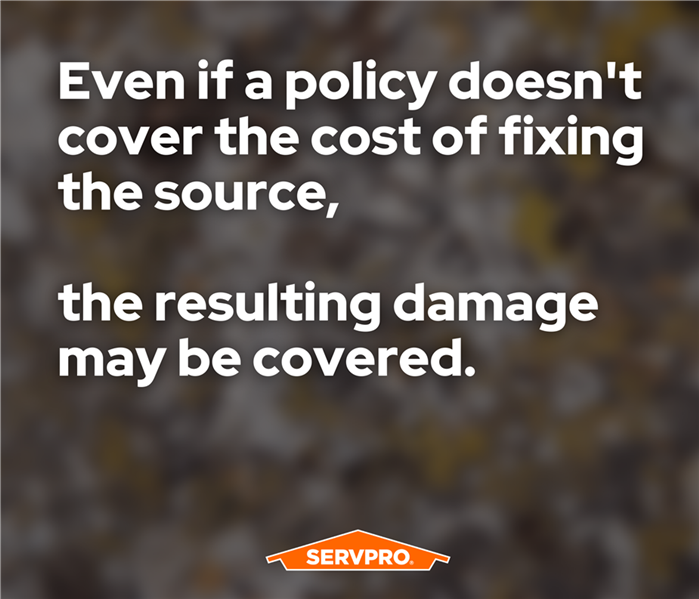 Perils covered by homeowners insurance policies vary. SERVPRO of Gulf Beaches South / West St. Petersburg cleans microbial contamination.
Perils covered by homeowners insurance policies vary. SERVPRO of Gulf Beaches South / West St. Petersburg cleans microbial contamination.
The perils covered by homeowners insurance policies vary depending on the insurer.
Mold damage can be costly and happen anywhere, so several insurance companies have restricted or eliminated coverage for this risk under standard policies. If you are concerned about fungus growth at a residence, try to identify the problem's source first, then check your policy for mold coverage.
The Cause of Mold Damage Matters
Restoration experts commonly refer to mold as secondary damage, as fungal growth typically results from direct water damage.
Insurers are more likely to cover mold damage that results from one of the following covered incidents:
- Appliance leaks
- Broken or burst pipes
- Pipe leaks
Even if a policy does not cover the cost of fixing the problem, the resulting damage may be covered. Check your policy and contact an insurance agent or adjuster.
3 Ways Insurers Limit Mold Coverage
Many homeowners insurance providers have removed or limited the amount of coverage for fungus growth because it is a higher risk peril. Since mold can grow practically anywhere, anytime in the right conditions—it’s not exclusive to one geographical location. Because of this an insurer may restrict coverage in these ways:
- Exclude mold damage completely
- Only cover microbial testing or cleanup
- Refuse coverage on properties with a history of mold
Read your policy carefully to determine whether there are any conditions under which mold is covered. If mold is not covered, you may want to add an endorsement.
What Is an Endorsement?
It may be possible for policy holders to pay for limited mold coverage. Ask your insurer whether any endorsements are available. This option may be costly, especially if your residence has a history of mold.Homeowners should determine the limitations of their coverage and decide whether to obtain additional mold insurance.
Paying for remediation out of pocket can be very expensive. The best way to prevent mold growth is to mitigate water damage and potential damage. Don’t be caught without the right mold insurance.
Storm Damage vs Flood Damage: What’s the Difference?
6/27/2022 (Permalink)
Storm Damage vs. Flood Damage and Dealing with Insurance
Property owners in Florida may have a hard time differentiating storm damage from flood damage—which is important when considering insurance coverage.
Commercial properties can sustain water damage from both flood and storms, but there are a few significant differences to keep in mind that may help you manage these risks.
The most general distinction is that stormwater comes from above, whereas flood water overspills natural bodies or watercourses and covers at least two acres of ordinarily dry land.
Storm damage to a commercial property may originate from a variety of causes such as:
- High winds
- Heavy rain
- Hurricanes
- Snow
- Tornadoes
Most business insurance plans protect from storm damage. Property owners need additional coverage to offset the expenses of flood damage. If your property is located on a flood plain, you should make sure you carry the policies necessary to protect your property investment.
Flooding occurs when water overflows a body of water or watercourse such as:
- Creeks
- Dams
- Lakes
- Storm-water channels
In order for water to be considered a flood, it must cover two acres and affect at least two properties.
If a commercial property is located in a high-risk zone, and the owner has a mortgage from an insured and federally-regulated lender, they must maintain flood insurance. Risks tied to flooding and storms should be known, minimized, and dealt with as soon as possible. Regardless of a moisture source, the risk of mold and other secondary damage within a building can be looming over the aftereffects of large, disastrous water events.
Restoring Damage From Storms and Floods
Restoration specialists can help property owners determine the precise causes of damage and the best solutions. If a property in Florida experiences flood damage or sustains damage during a storm, contact SERVPRO of Gulf Beaches South / West St. Petersburg at (727) 521-2562 as soon as possible.
Reduce Business Disruption After a Commercial Disaster
6/22/2022 (Permalink)
 Contact SERVPRO of Gulf Beaches South / West St. Petersburg at (727) 521-2562 to get started on your SERVPRO Emergency Ready Profile today.
Contact SERVPRO of Gulf Beaches South / West St. Petersburg at (727) 521-2562 to get started on your SERVPRO Emergency Ready Profile today.
After a major disaster, businesses suffer a variety of interruptions like:
- financial and emotional stress
- production downtime
- sullied reputation
- a plethora of other strains.
In the time period following a trauma like a fire, flood, pipe break, or other form of disaster, making the right decisions can be taxing and confusing. At SERVPRO, we regularly see local companies go through this and want business owners to know we are here to help after a commercial disaster. Part of that help comes through an emergency readiness checklist and disaster plan.
How To Minimize Risks and Loss of Revenue?
Creating a disaster readiness plan for your business can save you thousands on your bottom line, and can save your business, entirely. And the planning process does not have to be overwhelming when placed on top of all other responsibilities. SERVPRO of Gulf Beaches South / West St. Petersburg is here to help take the weight off your shoulders by developing an Emergency Ready Profile for your company. Knowing you are, "Ready for whatever happens," will give you, your clients, and employees confidence if or when your business is affected by a disaster.
We Generate A Plan For You
By developing a SERVPRO Emergency Ready Profile, you minimize business interruption by having an immediate action plan. Knowing what to do and what to expect in advance is the key to timely mitigation and can help minimize the severity of water and fire damage on your business.
SERVPRO Emergency Ready Profile Advantages Provide You With:
- A no-cost assessment of your facility.
This means there is no need to allocate funds, giving you a great value at no cost. - A concise Profile Document that contains only the critical information needed in the event of an emergency.
It will only take a little time to complete and will not take you away from current projects, but will save a lot of time if ever needed. - A guide to help you get back into your building following a disaster.
This helps minimize the amount of time your business is inactive by having an immediate plan of action. - Professionals at SERVPRO of Gulf Beaches South / West St. Petersburg, established as your disaster mitigation and restoration provider!
You have a provider that is recognized as an industry leader and is close by for an emergency response. - Identification of the line of command for authorizing work to begin.
This saves time so we can start cleaning up the damage, so you can reopen your business as soon as possible. - Specific Facility Details of your business such as shut-off valve locations, priority areas, and priority contact information.
You will have a quick reference of what to do, how to do it, and who to call in case of an emergency so that you are "Ready for whatever happens."
Contact SERVPRO of Gulf Beaches South / West St. Petersburg at (727) 521-2562 to get started on your SERVPRO Emergency Ready Profile today.
We are here to be your total solutions provider during an emergency commercial disaster so you can do what’s important: taking care of your clients, employees, and other business needs.
Storm Restoration Professionals Know How to Dry Your Property
6/13/2022 (Permalink)
SERVPRO of Gulf Beaches South / West St. Petersburg is a Leader in the Storm Restoration Industry for a Reason
Harsh weather conditions like flooding, wind, and storms cause devastating damage to homes and businesses. Property damage due to storm damage and flood water overwhelms many with concerns for personal safety and properties' security.
When this form of damage occurs to your home or business, the first step is to find safety, then contact a trustworthy storm damage restoration company.
An immediate restoration response reduces the extent of damage done to a property. Since roof damage is likely to be accompanied by water damage—a gaping hole is a recipe for moisture and storm water to make itself at home—a quick emergency response reduces the risk for internal and structural water damage and microbial growth.
When contacted, storm restoration experts will analyze the level of damage and make a judgment regarding how to begin. Professionals' main priority is to secure property before cleanup, repair, and restoration. Once a property's debris is removed from the exterior and roof repair is completed, experts move to drying and the internal cleanup of furniture, carpets, clothes, and other items.
The Drying Process of SERVPRO of Gulf Beaches South / West St. Petersburg
Oozing groundwater, especially in places prone to flooding, could cause damage, especially if no flood pump has been previously installed. SERVPRO of Gulf Beaches South / West St. Petersburg has a thorough drying process.
First, our team sets up industrial-strength drying equipment such as air movers and HEPA filtered dehumidifiers. Special care is taken to thoroughly dry the area around the original leak or cavity.
If water has seeped to the surrounding areas, special drying equipment is used. It can take 3-5 days for traditional drying. However, hard-to-dry materials, such as wood floors and crawlspaces, can make the process longer.
After the property is dry, the restoration of any damaged materials can start. Restoration is the most time-consuming part, but is very important and the bulk of returning the property to its preloss condition. We strive to make a property look, “Like it never even happened.”
We are available 24 hours for emergency response. Call us at (727) 521-2562.
Prepare for Hurricane Season
5/2/2022 (Permalink)
Hurricane Preparedness Checklist
Atlantic hurricane season runs roughly from June 1 thru November 30 each year, with September holding the spot for the peak hurricane month. While, technically, hurricanes can wreak havoc any time of the year, this is the time to be on your guard the most. With that said, there are several ways to prepare for these storms during the off-season so you are not caught unawares.
Stock Up on Essentials
You'll want to prepare for the loss of electricity and the ability to cook by stocking up on water, bread, non-perishables, and items you can eat without heating. Also, make sure you have:
- Extra batteries for flashlights or headlamps,
- Portable chargers and cables for cell phones,
- Candles with matches.
Check Your Insurance
If you live in a hurricane-prone region, make sure your insurance covers flooding and other expenses you may incur because of a St. Petersburg hurricane.
Make a Video of Your Home
If your home is damaged from hurricane winds and water, a home inventory video will help prove the pre-storm state of your home and make insurance claims processing easier. It would also be beneficial to make electronic versions of important documents related to your home and your personal information in case the originals are destroyed in the storm. Include digital files of documents such as your:
- Birth certificate
- Driver's license
- Home's deed
- Social security card
Protect Your Property
Install hurricane shutters or plywood of at least 3/4 inches in thickness. You may need to install hurricane clips to secure the roof of your home to the walls. This is important in areas that may receive a direct hit, and install foot and head bolts on all doors.
Make an Evacuation Plan
When it is time to evacuate, go. Make a plan for where you and your family will stay at least 50 miles from your St. Petersburg home. If you can, pre-pack a bag before the threat of an Atlantic hurricane is severe. Load it with clothes, blankets, food, water, electronics, and important papers or photos.
Use These Tips
Don't Take Risks. Ultimately, people are more important than things. People hurt in hurricane weather evacuate late or stay in their homes altogether. Be wise and get out early. Prepare in order to mitigate panic and this kind of risky behavior.
We Help with Hurricane Recovery
We live and work in this community; we might even be neighbors. As a locally owned and operated cleaning, damage restoration, and construction business, SERVPRO of Gulf Beaches South / West St. Petersburg is a proud and active member of this community and is ready to respond to your St. Petersburg home emergency 24/7/365. Call us today at (727) 341-1001.
How to Reduce Pet Stress During a Storm: Evacuation Plans
4/8/2022 (Permalink)
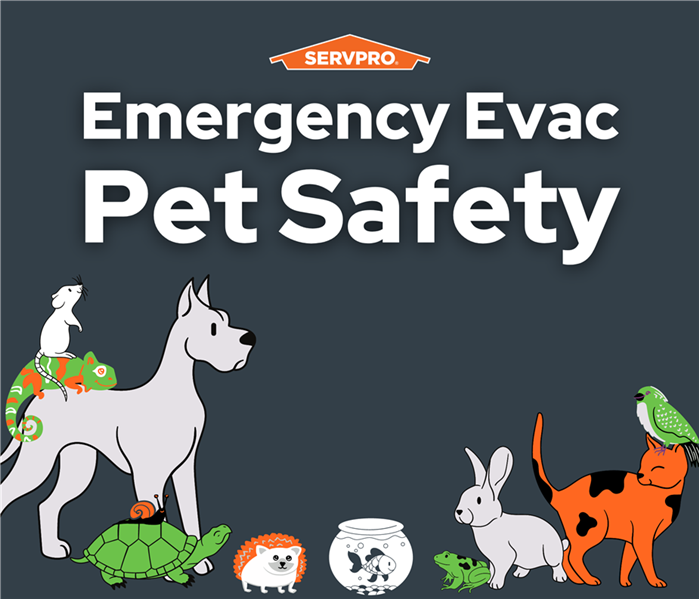 Follow these simple measures to reduce your pet’s stress.
Follow these simple measures to reduce your pet’s stress.
Plan For Your Pets
Inclement weather or fires can happen with or without notice. Creating an emergency plan can help prevent damage to your home and belongings and protect you and your loved ones - including pets! When putting a plan together, it’s important to plan for their needs as well.
Make an Evacuation Plan
Remember, if you must evacuate due to an emergency, the area is likely not suitable for your pets either. Your evacuation plan should consider where your pets will be taken, if not kept with you, and how best to transport them. Make a list ahead of time of pet friendly hotels or friends’ houses along your evacuation route and near your final destination. Know that some hotels and shelters do not accept animals.
You also might want to build an emergency travel kit for your animals. This will save time and worry when you must evacuate.
Items to include in your pet's emergency kit:
- A completed Emergency Pet Passport containing important information like your pets’ veterinarian contact info, medical needs, license/chip info, photos, etc.
- Leash, harness, and carrier with blanket to transport animals
- A few portions of a suitable non-perishable food, water bowl, bottled water, and can opener
- Cat litter and pan or bags for excrement
- Medications
- Toys
Don’t Have to Evacuate?
If evacuation is not necessary, there are still some things you can do to reduce your pet’s stress in an uncomfortable situation like a thunderstorm.
Pet Stress Symptoms
Pets may exhibit signs of stress and anxiety that can be alleviated by simple measures. Some of these symptoms include whimpering, hiding, pacing, or shivering. These symptoms may be caused by a variety of factors including pets’ greater sensitivity to sounds and air pressure.
As stress increases, symptoms may become more severe. Follow these simple measures to reduce your pet’s stress:
- Remain calm as an owner
- Create a comforting space for them in a smaller room like a closet or under a blanket
- Close blinds and curtains
- Keep them in their normal routine, if possible
Read more storm and pet related articles here.
How to Prepare a Business for Storms
4/4/2022 (Permalink)
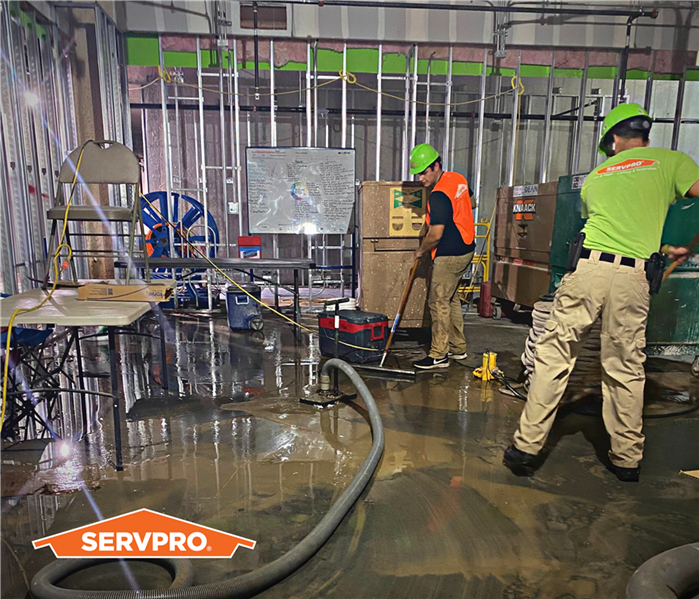 Give us a call at (727) 341-1001 for 24-hour emergency service. Our commercial loss team is standing by to return your business to preloss condition.
Give us a call at (727) 341-1001 for 24-hour emergency service. Our commercial loss team is standing by to return your business to preloss condition.
3 Ways to Prepare for Storms
While disaster preparedness is not everyone's favorite activity, it can be the difference between a company surviving a storm and one that does not. When a hurricane strikes a small company, as many as 40 percent of these businesses never reopen. So a good plan is critical. Read further for our four top tips to prepare your company.
- Buy Insurance. Have the right policy in effect when a storm strikes. Claims payments can replace lost inventory and damaged equipment that is vital to your success. Structuring a policy that makes sense for your company may take a time investment on the front end, but will save valuable time, money and energy given a claim-qualifying event. Business interruption insurance covers some expenses if the damage is severe enough to suspend normal workplace operations.
- Fortify the Building's Exterior. As common sense tells us, a sturdy building will prevail against high winds—like a hurricane or tornado—longer than a weaker builder. A fortified roof system, durable siding, and storm windows will have a better chance of keeping water out and holding up in strong winds.
- Make a Disaster Preparedness Checklist. This document will include all the information needed in a storm: important contacts of emergency services in the area, the location of critical equipment, shutoff valves, and emergency supplies, and the phone number of a local storm remediation team for assistance in the recovery. SERVPRO of Gulf Beaches South / West St. Petersburg offers this information in the form of an Emergency Ready Plans or ERPs. These plans are drawn up by one of our team members to make sure you have access to our emergency services and other important information at a moment's notice.
It's a good idea to consult with experts and bring in professionals to coach employees on what actions to take and not to take in times of stress. Organizations such as FEMA have helpful resources to help with your efforts.
About SERVPRO of Gulf Beaches South / West St. Petersburg
We specialize in the cleanup and restoration of commercial and residential property after a storm, water, or fire event. Our staff is highly trained in property damage restoration. From initial and ongoing training at SERVPRO’s corporate training facility to regular IICRC-industry certification, rest assured our staff is equipped with the knowledge to restore your property.
Give us a call at (727) 341-1001 for 24-hour emergency service. Our commercial loss team is standing by to return your business to preloss condition.
Lightning Strikes Cause More House Fires Than You'd Think
9/7/2021 (Permalink)
The National Weather Service reports that lightning starts about 4,400 house fires each year, causing around $283 million in damages.
Here at SERVPRO of Gulf Beach South / West St. Petersburg, we can help you with fire damages caused by lightning strikes. When the lightning hits a residence, it travels through the electrical lines to one of the home’s electrical boxes, which can catch fire. These fires can leave severe damage, including smoke damage to your home.
SERVPRO of Gulf Beach South / West St. Petersburg’s mitigation team can do a chem-sponge technique used to clean soot off the walls. In doing this, SERVPRO of Gulf Beach South / West St. Petersburg can ensure that no fire damage or smoke damage goes untreated.
If needed, we can paint the affected walls after the cleanup is completed and replaced with the necessary drywall. Our professional in-house crew uses a white-glove treatment and quickly completes the entire project. You can count on SERVPRO of Gulf Beach South / West St. Petersburg from the first contact to completion.
Why Choose SERVPRO? Because in the event of fire damage or water damage, large or small, we’re here to help. Contact us at (727) 341-1001
Protection From Wind Damage
7/12/2021 (Permalink)
Many areas of the United States have experienced heavy winds and storms this season, and the strong, powerful winds can cause significant damage to your home. Wind damage can cause a range of destruction to your property, from broken windows and fallen tree branches to severe damage to the roof, garage, or car. It can happen from the strong wind or indirectly from the wind blowing debris into your house.
Wind Damage from Different Types of Storms
Thunderstorms are the most common wind and storm damage, but winds from hurricanes or tornadoes are stronger and can severely damage. It can produce many types of damaging weather such as lightning, hail, tornadoes, straight-line winds, flooding, etc. Thunderstorms are responsible for wind damage cases in the U.S. However, storm damage repair may be costly for hurricane or tornado wind damage. Billions of dollars are spent on wind damage repair and storm damage restoration each year; understanding the nature of wind damage can help you limit the amount of damage to your property and save on restoration and repair costs.
It's important to know when a storm is approaching your area and what type of storm it is so you know the potential and level of damage to expect. These wind damage facts will help you better understand the potential for wind damage and how to prevent it. Here are some steps you can take to minimize the risk of damage to your home when severe weather strikes.
Preventing Wind and Storm Damage
Most wind damage starts by flying debris either from plants or other structures unsecured. If a storm is approaching your area, ensure any potential debris such as patio furniture, toys, garbage cans, and other objects are secured or brought inside. Secure your doors and windows to help minimize the potential storm damage to the home.
Roof damage reduces during the construction phase when the roof deck, shingles, or membrane is applied over the decking. A well-designed roofing system will anchor the trusses and decking to the walls and foundation to keep the entire roof from lifting off the building in a strong wind. Roofing material should latch to the deck.
Loosely connected shingles will lift from the deck. Siding damage reduces at the construction phase. Fastened siding isn't as likely to lift off a structure in strong wind. Building codes will likely direct the minimum standards for connections. You, your architect, or your contractor may decide to exceed these minimums for a stronger storm-resistant structure.
Falling trees and tree limbs are another significant type of damage to structures in a windstorm. Tree maintenance to remove dead limbs or identify and remove weakened trees will reduce the likelihood of structural damage. Mitigating damage after a storm closes any openings made in the structure by the wind. Roof openings and broken windows are the most common problem.
Keep a roll of plastic sheeting that cuts to size and nails over the opening. Your insurance policy will likely cover the cost of an emergency close-up. Contact your agent or claims center to report the damage and seek advice on how to proceed. Falling trees and tree limbs can open a structure with sudden violence. A tree on a structure is a serious personal and structural safety issue.
Trees, at times, won't shift positions. It can shift and cause serious injury to the unwary. Fallen trees may mask severe other safety issues, such as downed electrical wires. The wires may still be live, and the tree itself energized. Contact your agent or claims center to report the damage and seek advice on how to proceed.
Suppose your home or business sustains wind damage during a storm. In that case, it's essential to contact a storm damage restoration professional as soon as it is over to help limit and repair the damage. SERVPRO of Gulf Beaches South / West St. Petersburg can respond immediately to storm and flooding conditions. Our quick response will help prevent secondary damage and help reduce restoration costs.
Preventing Flood Damage
7/12/2021 (Permalink)
According to the National Flood Insurance Program, flooding is the most common natural disaster in the United States, causing $2.7 billion in losses between 2001 and 2010. Most homeowner’s insurance policies do not cover flooding, so it may be necessary to buy a separate flood policy for your home.
Three Key Steps
Here are a couple of tips to keep water from entering your home during a heavy rain event:
- Fix foundation leaks that may allow water to enter your home.
- Make sure your roof is secure and protected.
- Clear gutters and drains.
If water ever floods your home, getting someone on-site as soon as possible is key to keeping the amount of damage to a minimum.
SERVPRO of Gulf Beaches South / West St. Petersburg is ready to respond at any time and also provides a free assessment!
How to Check for Roof Damage After a Storm
7/12/2021 (Permalink)
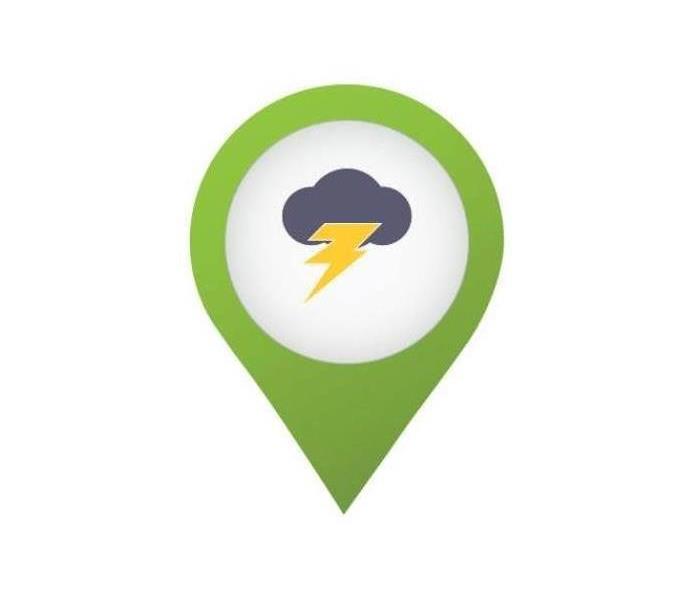 If you have storm damage contact SERVPRO of Gulf Beaches South / West St. Petersburg at (727) 341-1001.
If you have storm damage contact SERVPRO of Gulf Beaches South / West St. Petersburg at (727) 341-1001.
After a significant storm, it's a good idea to inspect your property for storm damage. Your home's main line of defense is your roof, and it takes a beating. Pay attention to things like dings in your gutters or tears in your window screens, which indicate hail damage. You may see missing tiles or other signs of roof damage from the ground, but most leaks don't represent a need for whole roof replacement. Usually, the leak is coming from something requiring minor roof repair. Find the source of the leak, stop it, and clean the water damage.
Find the Leak Source
During storms in Florida, wind damage lets the rain into your roof. Inside the home, look for stains that indicate the leak source and the area that needs roof repair. You may see water stains on your ceiling or coming down a wall. When you see that, get your flashlight and head to that area. Here are five familiar sources for a roof leak:
1. Vents and fans
2. Chimneys
3. Window dormers
4. Vent pipes
5. Unsecured nails and nail holes
Fix Water Damage
To complete your roof repair, start looking for materials with water damage. Check for discolorations and rotting wood and wet drywall and insulation. When you find mold, remain careful and don't spread during the cleanup process.
A mold remediation professional can help create a containment area while working on the water and mold damage. If you haven't found mold, be sure to start drying any wet materials immediately. Mold can begin growing on wet damaged materials in as little as 48 hours. Complete drying is critical to preventing mold, and it may take longer than you realize. Specialists have monitoring equipment that they use to ensure materials are dry.
Storm vs. Flood
7/6/2021 (Permalink)
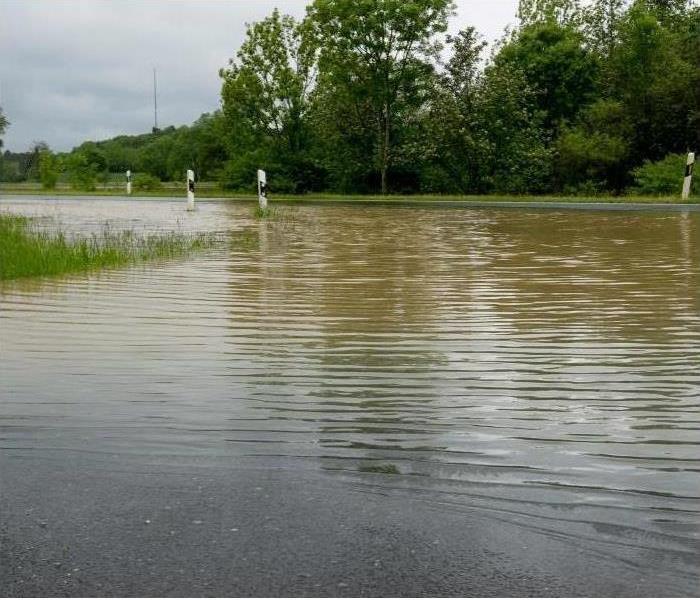 Contact SERVPRO of Gulf Beaches South / West St. Petersburg today!
Contact SERVPRO of Gulf Beaches South / West St. Petersburg today!
Property owners may have a hard time differentiating storm damage from flood damage. Commercial properties can sustain water damage from either source. There're a few significant differences to keep in mind that may help you manage these risks.
The most general distinction is that stormwater comes from above. In contrast, floodwater overspills natural bodies or watercourses and covers at least two acres of ordinarily dry land.
Storm damage to a commercial property may originate from a variety of causes such as:
• High winds
• Heavy rain
• Hurricanes
• Snow
• Tornadoes
Most business insurance plans provide protection from damage caused by storms. Property owners need additional coverage to offset the expenses of flood damage. Suppose your property is located on a flood plain. In that case, you should make sure you carry the policies necessary to protect your investment.
Flooding occurs when water overflows a body of water or watercourse such as:
• Creeks
• Dams
• Lakes
• Storm-water channels
Water categorized as a flood must cover two acres and affect at least two properties. A commercial property located in a high-risk zone, and the owner has a mortgage from an insured and federally-regulated lender, they must maintain flood insurance. Damage resulting from either flooding or storms can cause severe problems. Be sure to plan, prevent, and handle as soon as possible. Regardless of the source of moisture, the risk of mold, and other secondary damage within a building can be just as severe.
Restoring Damage From Storms and Floods
Restoration specialists can help property owners determine the precise causes of damage and the best solutions. If a commercial property in Florida experiences flood damage or sustains damage during a storm, contact SERVPRO of Gulf Beaches South / West St. Petersburg.
Storm Damage to your Florida Home
4/30/2021 (Permalink)
What to Do Before Floodwaters Enter the Clearwater Home
Homeowners have many different responsibilities, including taking care of damages when they purchase a home. The landlord can't make any repairs that are needed since the individual may be changing from renting to owning the property they are investing in. Some problems that a homeowner experience is relatively standard, while others may be the exception or an only one-time occurrence. A unique event may be a natural disaster like water damage in the home from thunderstorms, tornadoes, or a nearby river that overflows.
Regardless of the situation, people should know what they can do before tragedy strikes so that they are ready to protect their family and salvage anything that the flood water leaves. With this said, here are a few essential items of information that everyone should know, especially if they live in a high risks area for flooding.
Tip #1 – Make Sure Home Insurance Policies Include Flooding
When homeowners purchase insurance for their homes and property, it is essential to review the policies very carefully in detail. Considering this information can save the homeowner hundreds to thousands of dollars. This is because the policies they purchase must cover natural disasters like Clearwater floods not to lose their investment entirely.
Tip #2 – Ensure Carpeting on the Floors is Completely Dry
Preventing mold and mildew is a necessity if floodwaters enter the home. By hiring a professional to get the carpets thoroughly dry, the owner can save money in water damages in the long run.
Tip #3 – Move Furniture Items to a Higher Level
Whenever possible, the homeowner should move the furniture in the home to a higher level. This can help to minimize the damages and can also save items that may not be replaceable.
Locally Owned Company with National Resources
Know what to do before floodwaters invade the home can save homeowners thousands of dollars. For additional information regarding flooding and how to minimize water damage, contact SERVPRO of Gulf Beaches South / West St. Petersburg at (727) 341-1001.





 24/7 Emergency Service
24/7 Emergency Service





